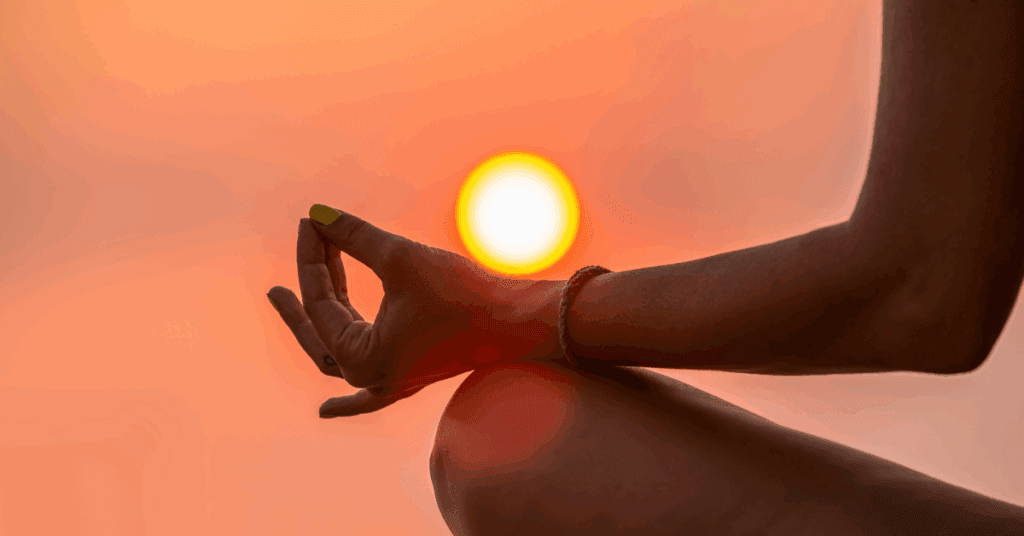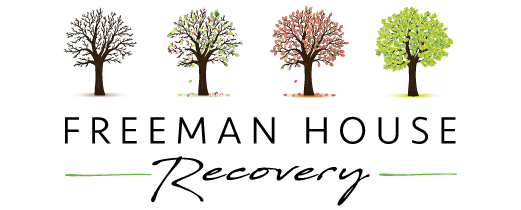Meditation in recovery isn’t about sitting cross-legged and pretending everything is okay. It’s about paying attention. Just paying attention to the chaos in your head without running from it. People often think meditation needs to feel peaceful. But it doesn’t. Especially not when you’re dealing with cravings, shame, regret, and anxiety. In recovery, meditation is a tool to see clearly what’s going on without reacting. That’s it. You don’t need incense or music. Just awareness.

The difference between meditation and mindfulness
Mindfulness is what you do all day. Meditation is when you stop and practise it on purpose. Mindfulness can happen when brushing your teeth, noticing your thoughts while driving, or sitting in traffic without exploding. Meditation is when you take a few minutes to sit, breathe, and let your mind do what it does without chasing it. Both work together. You use meditation to build the muscle. You use mindfulness to live with more clarity when things go sideways.
Why the mind is a battleground in recovery
The mind becomes noisy when you remove the thing you used to numb it. That’s normal. Recovery exposes how busy your thoughts are. It’s not that the mind becomes worse, it’s that you’re finally hearing it. That inner voice starts arguing, making excuses, blaming others. It wants to protect you from discomfort. But it also lies to keep you in patterns. Mindfulness makes it harder for those lies to slip past unnoticed.
Understanding racing thoughts and how they hijack progress
Racing thoughts feel like a storm. You wake up with one thought, then another piles on, and soon you’re convinced nothing is working. These thoughts aren’t always logical. They’re quick and emotional. Left unchecked, they can push you to sabotage yourself. Mindfulness gives you space between the thought and the reaction. It teaches you to notice the spin, instead of joining it.
How past regrets and future fears feed cravings
Cravings often come when you’re stuck in memories or worried about what might happen. Regrets make you feel unworthy. Fears make you panic. Together, they stir up discomfort. That discomfort becomes a craving. Mindfulness grounds you back to now. It reminds you that right now, you’re okay. You’re not in the past. You’re not in the future. You’re here. That short pause can keep you from slipping.
The impact of stress on relapse
Stress shortens your patience. When you’re stressed, your brain looks for quick relief. That’s when old habits show up. Meditation doesn’t remove stress, but it changes how you relate to it. Instead of being swept up in pressure, you learn to sit with it, even for a minute. That minute matters. It stops impulsive decisions. It gives your nervous system a break. You start realising you don’t need to escape everything that feels hard.
Simple breathing and how it interrupts cravings
When a craving hits, your breath changes. It becomes short and shallow. That’s your body preparing to act. But you can flip the switch. One deep breath slows your heart. Another breath reminds your brain it’s not an emergency. You start regaining control. The craving doesn’t disappear, but it doesn’t run the show anymore. That’s the power of five slow breaths. No one even needs to know you’re doing it.
Why silence is uncomfortable but powerful
Silence exposes things you’ve been avoiding. That’s why most people hate it. In silence, you start to hear your real thoughts. The stuff behind the noise. And sometimes it’s messy. But silence also gives you honesty. Without distraction, you meet yourself. That can be scary. But it’s also where real recovery starts. In those quiet moments where you choose to sit instead of run.
Mindfulness vs. distraction: what actually helps
Distraction gives you a break. Mindfulness gives you understanding. Both have value, but they work differently. Distraction is like turning the radio up when the car makes a noise. Mindfulness is pulling over and checking what’s wrong. You don’t always have the energy to face things head-on. That’s okay. But long-term healing comes from noticing your patterns instead of escaping them.
How mindfulness helps you respond instead of react
Reactions are fast. They’re emotional. Responses are slower. They include thought. Mindfulness teaches you to wait that extra second. In that second, you can ask yourself, “Is this helpful?” That pause changes everything. You’re not letting old behaviour run on autopilot. You’re choosing what happens next. Over time, this builds confidence. You feel more in control of your life again.
Getting out of autopilot mode
Autopilot is when your body is present, but your mind is somewhere else. In recovery, autopilot is dangerous. It’s how relapses sneak in. You don’t realise what’s happening until it’s already done. Mindfulness trains you to check in. Ask simple questions. What am I feeling? What am I thinking? Am I doing this out of habit? These check-ins keep you awake to your behaviour.
Dealing with shame using observation instead of judgement
Shame thrives in silence. It grows when you beat yourself up. Mindfulness helps you observe what you’re feeling without labelling yourself as bad. You notice the thought, the feeling, the urge. You say, “This is shame.” You don’t fight it. You don’t ignore it. You just see it. That simple act lowers the volume. You start treating yourself with more kindness. And kindness builds resilience.
Building mental stamina without forcing it
You don’t need to sit for 30 minutes to benefit from mindfulness. Start small. One minute. Then three. Then five. You’re building stamina, not proving something. It’s not a contest. It’s practice. Over time, sitting with your thoughts gets easier. You still feel discomfort. But it doesn’t scare you anymore. That’s mental strength. Quiet, steady, real.
Mindfulness during cravings or urges
Cravings are loud. They push. They demand. Mindfulness slows that down. You don’t have to obey every urge. You can sit with it. Breathe. Ask, “What’s really going on?” Sometimes it’s stress. Sometimes boredom. Sometimes nothing. Either way, you don’t react right away. You create space. That space is where better decisions happen.
Creating anchors for mental reset
Anchors are small actions that remind you to pause. It can be touching your watch. Squeezing your fingers. Taking a deep breath before opening a door. These anchors become habits. When stress rises, your body remembers: pause here. That pause helps reset your reaction. You’re not controlled by the moment. You have a say again.
The role of meditation in resetting sleeping patterns
Sleep problems are common in recovery. Thoughts don’t switch off. Meditation won’t knock you out, but it slows your system down. A few minutes of breathing or body scanning at night can help your brain shift gears. It tells your body it’s safe. That’s often all it needs. Over time, your sleep starts to improve, not because you force it, but because your mind is calmer before bed.
How meditation improves emotional control
You can’t control your emotions, but you can control how you respond. Meditation helps you spot emotions early. Instead of being overwhelmed by anger or sadness, you learn to recognise the signs. You breathe. You wait. That waiting helps your emotional system calm down. You start to realise not every emotion needs a reaction.
Learning how to sit with discomfort instead of numbing it
Discomfort isn’t dangerous. It just feels that way. In recovery, your first instinct might be to avoid it. Mindfulness teaches you to sit. Not forever. Just for now. You learn that discomfort rises and falls. You see that you can survive it. The more you practise this, the less you fear it. That’s a game-changer.
Using breath to break reactive cycles
The breath is always available. That makes it powerful. When you feel triggered, your breath tells your brain what’s going on. Fast breath? The brain thinks danger. Slow breath? The brain relaxes. You can use this anytime. It doesn’t take training. One breath. Then another. You stop the cycle before it grabs you.
Grounding techniques you can do without anyone noticing
Grounding helps you come back to now. You can press your feet into the ground. Notice five things you see. Focus on the temperature of your drink. All of this can be done without looking strange. These small actions help when your mind is racing. You bring yourself back. You remind yourself you’re okay.
The trap of chasing peace versus sitting with the present
Peace is not something you chase. It’s something that shows up when you stop fighting everything. Meditation teaches you to sit with what’s happening. Even when it’s messy. That’s when the tension eases. Not because you found peace. But because you stopped trying so hard to avoid what’s real.
Why consistency matters more than perfection
You don’t need to meditate perfectly. You just need to do it often. Perfection creates pressure. Consistency builds progress. Even one minute a day helps. The goal isn’t to control your mind. It’s to stop being surprised by it. That only comes with regular practice.
What a 2-minute pause can do in high-pressure moments
Two minutes might not sound like much. But in a high-pressure moment, it can be everything. It’s the space between making a choice and regretting it. Those two minutes let your body calm down. Your brain thinks clearly. You make decisions based on values, not panic.
The difference between awareness and thinking
Thinking is automatic. Awareness is deliberate. Most of us live in our thoughts without noticing them. Mindfulness shifts that. You see the thought. You don’t chase it. You just let it float past. That small shift is powerful. It gives you more choice over how you act.
Building self-respect through daily presence
Showing up for yourself builds trust. Every time you pause instead of react, you’re proving something. You’re showing yourself that you matter. That you can handle discomfort. That you don’t need to run from your life. Over time, this becomes self-respect. Quiet, but solid.
What people get wrong about being ‘good’ at meditation
There’s no winning at meditation. Some days your mind is all over the place. That’s normal. The point is not to control the mind. It’s to notice it. To show up anyway. The only way to do it wrong is to quit because it feels hard.
Why you don’t need to feel calm for meditation to be working
Calm is a nice side effect, but it’s not the goal. Some sessions feel noisy. Some feel frustrating. That’s okay. You’re building tolerance. You’re learning not to panic at your own thoughts. That’s progress. Whether you feel calm or not.
Building recovery habits around a single cue
Habits stick better when you attach them to something you already do. Sit for a minute after brushing your teeth. Breathe for 60 seconds before starting your car. Tie your practice to something small. That’s how it grows. One cue. One minute. Repeat.
How mindfulness sharpens your decision-making over time
With practice, you start to see things more clearly. You stop reacting so fast. You think ahead. You notice patterns. That makes your decisions sharper. You start trusting your judgement. Not because you never make mistakes, but because you’re awake to them.
Mental detox without guilt or shame
You don’t need to punish yourself to improve. Mindfulness helps you reset without self-blame. You sit. You breathe. You let go of what’s heavy. You don’t need to earn the right to feel better. You’re already allowed.
Why meditation is not about emptying the mind
The mind never really goes blank. And that’s fine. Meditation is not about emptiness. It’s about watching the traffic without chasing every car. The thoughts keep coming. You just stop giving all of them your energy.
Letting your thoughts exist without grabbing onto them
Thoughts are not instructions. They’re not facts. You can let them pass. Some are helpful. Most aren’t. Mindfulness helps you spot the difference. You stop arguing with every thought. You just watch.
Noticing the urge before the action
Urges don’t come out of nowhere. There’s always a build-up. A feeling. A thought. A moment of tension. Mindfulness helps you notice that early. Before it becomes behaviour. That gives you choice. And choice changes everything.
Making space between craving and choice
Cravings push hard. They tell you, “Now or never.” Mindfulness adds space. It shows you that you can wait. You can pause. That pause is where choice lives. And choice keeps you grounded.
How to reset after a relapse using mindfulness
Relapse doesn’t mean you’ve failed. It means you need a reset. Mindfulness helps you step back and see what happened. Without shame. Without panic. You breathe. You look. You learn. Then you try again. That’s how real progress works.
The loop of thought, emotion and behaviour in recovery
Thoughts trigger emotions. Emotions trigger actions. Actions reinforce thoughts. It’s a loop. Mindfulness breaks the loop. It lets you notice the thought before it becomes a feeling. The feeling before it becomes an action. That space makes all the difference.
Staying present even when your mind drifts
Your mind will drift. That’s not failure. That’s normal. The skill is in coming back. Over and over. That’s the practice. You drift. You return. You don’t quit. That’s how presence is built.
How to begin again without judgement
You’ll miss days. You’ll lose focus. You’ll forget to pause. That doesn’t mean you’ve failed. It means you’re human. Every time you return, you’re strengthening the habit. Begin again. Always.
Creating your own practice based on what feels honest
There’s no single right way. Some people sit. Some walk. Some focus on sound or breath. What matters is that it feels real to you. Not forced. Not fake. Honest. Start there. Keep showing up.

